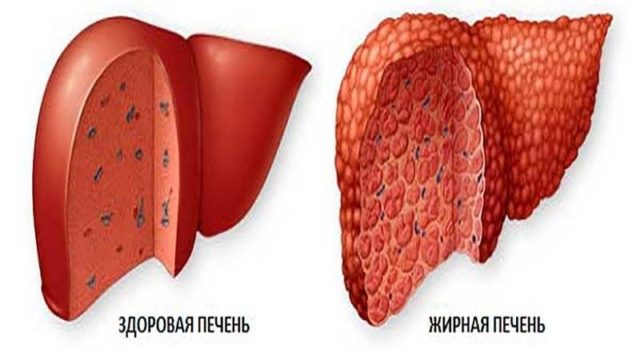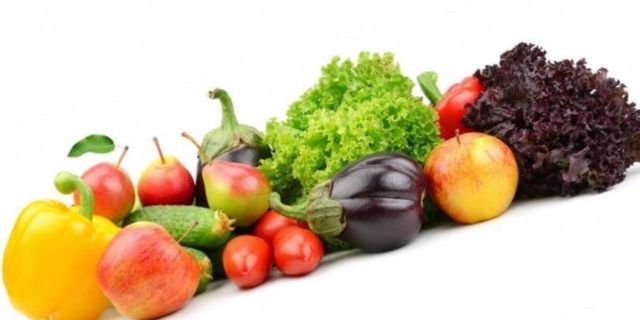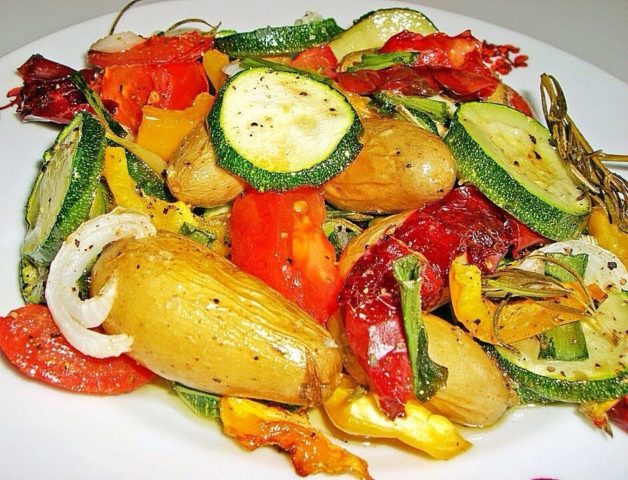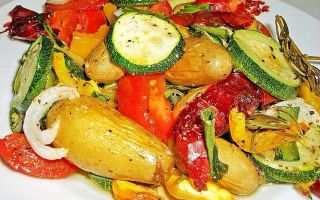Content
The diet for liver steatosis is one of the most important therapeutic measures for this disease. The diet should be selected individually for each patient by a dietitian, but there are general recommendations regarding this diagnosis. With the help of a diet, you can restore the liver, normalize metabolic processes, and increase the secretion of bile. The duration of the therapeutic diet for steatosis is determined by the doctor, taking into account the clinical manifestations and diagnostic results.
Nutritional rules for liver steatosis
Liver steatosis (the more familiar name for fatty hepatosis or fatty liver infiltration) is a disease in which excessive fat accumulation occurs in the cells of the organ. Pathology is associated with toxic effects on the liver or certain diseases of the body. The most common causes of liver steatosis include:
- exposure to toxins (drugs, alcohol);
- chronic diseases of the digestive tract;
- metabolic disorders in diabetes mellitus, obesity;
- unbalanced diet.

As a rule, a progressive course is not characteristic of liver steatosis. However, sometimes an inflammatory process in the liver (steatohepatitis) is added to the fatty infiltration. It happens that the disease transforms into fibrosis or cirrhosis. Symptoms that appear with liver disease are absent with steatosis. Patients may complain of heaviness in the right side, discomfort in the liver, weakness and nausea.
After the diagnosis of steatosis, liver dystrophy should be stopped. In the initial stages of the disease, you can stabilize the condition with a diet, without using medication. First of all, it is necessary to reduce the load on the liver and create favorable conditions for the proper functioning of the organ.
During the diet, patients need to reduce the daily intake of fats to 70 g. Preference should be given to products with polyunsaturated fatty acids:
- seafood;
- bird;
- sea fish.
Most of the fats must come from plant foods, such as vegetable oils and olives.
With regard to the use of proteins with steatosis, then those are required that consist of essential amino acids. These foods include nutritionists:
- chicken, turkey;
- lean meats and fish;
- milk products;
- eggs;
- buckwheat, oatmeal.

By limiting protein intake, liver dystrophy can be increased.
A decrease in carbohydrates in the diet is achieved by limiting rich pastries, sweets, bread. It is recommended to enrich the diet with complex carbohydrates - fruits and vegetables, nuts, legumes, bran, seaweed.
With overweight with steatosis, it is recommended to adhere to a certain number of calorie units per day, take into account gender, age, physical activity of a person.
Diet for liver steatosis
The key role of the diet is to reduce the amount of fat in the liver. For this, table number 5 is most suitable, the Pevzner diet. Basic principles:
- baking, stewing, boiling are allowed from heat treatment of products;
- drinking regime (up to 2 liters of water);
- food temperature should not be higher than 60 ° C;
- fractional meals more often 5 times a day.
The energy value of products during the diet should be no more than 3000 kcal, of which proteins - up to 140 g per day, carbohydrates - up to 400 g, fats - no more than 70 g. Table number 5 is prescribed for the following pathologies:
- chronic hepatitis;
- cholecystitis;
- pancreatitis;
- gout;
- cirrhosis;
- urolithiasis disease.
This diet is not used for diseases in the acute stage.
Allowed Products

Allowed foods and dishes for liver steatosis include:
- first courses with cereals and vegetables;
- lean varieties of fish and meat;
- porridge in water and low-fat milk;
- non-acidic types of berries and fruits;
- dairy products;
- dried bread, toast, croutons;
- vegetable oils;
- chicken egg protein;
- vegetables after heat treatment;
- weak teas, herbal teas, jelly;
- cereals, especially buckwheat and oatmeal;
- jam, mousse, marshmallow, marshmallow, marmalade;
- sour cream, vegetable, milk sauces.
Partially limited food products for steatosis include boiled sausage, cheeses, offal, butter, nuts, weak coffee and tea, vegetable juices, honey.
Prohibited foods

The following foods are strictly prohibited in the diet:
- alcoholic drinks;
- rich meat broths;
- fatty meats, fish;
- smoked sausages, lard;
- salty, pickled dishes;
- spices, seasonings;
- semi-finished products;
- fast food;
- mushrooms;
- sauerkraut;
- carbonated drinks;
- chocolate, sweets, cakes;
- strong coffee, cocoa;
- fatty dairy and sour milk products;
- baking;
- cereals - corn, wheat, barley;
- vegetables - tomatoes, radishes, onions, garlic, spinach, asparagus;
- legumes, peas, lentils.
Sample menu for a week
The main rule of diet during the treatment of liver steatosis is to avoid fatty foods. Prohibited foods should be eliminated from the diet in any quantity to avoid complications. The attending physician or nutritionist will help to compose the menu for the week, based on the individual needs of the patient and clinical manifestations.
First day:
- breakfast - buckwheat porridge, steamed egg omelet, herbal tea;
- 2nd breakfast - low-fat cottage cheese casserole with dried fruits;
- lunch - vegetable puree soup, baked fish, compote;
- afternoon snack - low-fat kefir, crackers;
- dinner - steamed chicken cutlet, baked pumpkin, weak tea with sugar;
- at night - a glass of low-fat milk.
Second day:
- breakfast - milk oatmeal with raisins, green tea with sugar, a sandwich with cheese;
- 2nd breakfast - baked apple in syrup;
- lunch - soup with crackers, boiled vegetables, berry compote;
- afternoon tea - yogurt;
- dinner - meat soufflé with boiled potatoes, tea with rose hips, biscuits;
- at night - a decoction of chamomile.

The third day:
- breakfast - weak coffee with milk, cottage cheese with low-fat sour cream;
- 2nd breakfast - milk, biscuits;
- lunch - milk soup with small vermicelli, baked fish, unsweetened black tea;
- afternoon tea - banana;
- dinner - boiled chicken breast, baked zucchini, berry jelly;
- for the night - kefir.
Fourth day:
- breakfast - steamed cheesecakes, weak black tea with sugar;
- 2nd breakfast - yogurt with biscuit;
- lunch - baked pumpkin with veal, vegetable juice;
- afternoon tea - drinking yogurt, dry biscuits;
- dinner - fish in foil, vegetable stew, berry fruit drink;
- at night - a glass of low-fat milk.
The fifth day:
- breakfast - rice porridge with dried fruits, sweet herbal tea, a slice of cheese;
- 2nd breakfast - peach, unsweetened black tea;
- lunch - pumpkin puree soup, boiled veal, berry compote;
- afternoon tea - curdled milk, dry biscuits;
- dinner - cottage cheese casserole with prunes, green weak sweet tea;
- at night - kefir with croutons.
Sixth day:
- breakfast - steamed omelet with olives, sweet milk tea;
- 2nd breakfast - fruit puree with cookies;
- lunch - boiled rabbit meat, cauliflower with eggs and herbs, yogurt;
- afternoon tea - baked pumpkin with dried apricots;
- dinner - boiled fish with mashed potatoes, sweet tea with honey;
- at night - a glass of warm milk.
Seventh day:
- breakfast - milk rice porridge with raisins, coffee with a lot of milk;
- 2nd breakfast - curd soufflé with honey;
- lunch - vegetable puree soup, steamed turkey cutlet, dried fruit compote with cookies;
- afternoon tea - herbal decoction with crackers;
- dinner - milk soup with small vermicelli, baked vegetables with veal, weak sweet tea;
- at night - a decoction of herbs.

This menu option for 7 days with liver steatosis is approximate. You can diversify it yourself, with the help of recipes and culinary imagination.
Folk recipes for the treatment of steatosis
A therapeutic diet for liver steatosis plays a major role, but traditional medicine recipes can be used as an additional method.
In early May, you can boil honey from dandelion flowers. In dry weather, you need to collect yellow flowers outside the city, away from roads. Rinse under running water, grind with a blender and pour over with natural honey. The mixture can be added to drinks or consumed on a spoon before meals.
In equal proportions, combine the crushed dandelion roots and milk thistle seeds, add one spoonful of goldenrod herb, dried birch leaves, and nettle. Pour the mixture into a thermos and pour hot water. Insist for about half an hour, then strain. Drink one glass each morning and evening.
Many patients brew bran before eating. After cooling, they should be consumed in 2 tbsp. l. three times a day. To reduce fatty deposits in the liver, you need to consume bran regularly.
Conclusion
Diet for liver steatosis is an important component of the treatment process. It should be aimed at reducing fat deposits in liver cells, unloading the organ. The main rule of the diet is the rejection of fats, as well as canned food, fast food, smoked meats, pickles and sweets. Alcoholic drinks are strictly prohibited throughout life.

